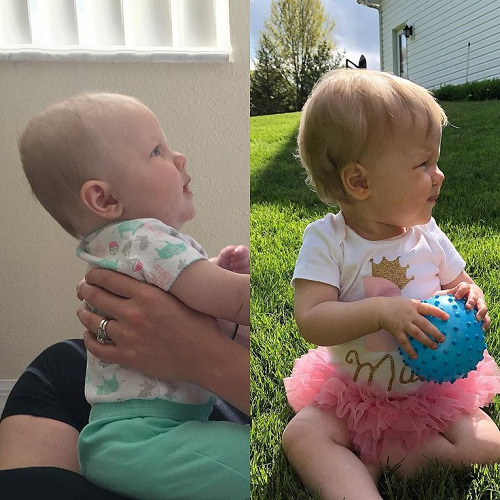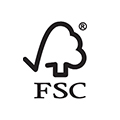According to research conducted by the Academia Americana de Pediatria, babies who sleep in specific sitting baby devices are more likely to be at risk of injuries or airway blockage.
Sometimes we can’t stop newborns from dozing off in the most unexpected locations, like a swing, stroller, or car seat. Questions often arise on the safety of babies sleeping in a swing.
This guide explores the nature of baby swings, the dangers of sleeping in such devices, and advice on good sleep habits for babies.
O que é um balanço para bebês?
UM balanço de bebê is a seat device that simulates a soft swaying motion similar to that a baby would have experienced in the womb to entertain and relax them. A baby swing consists of a seat suspended by chains or a rope and may be swung sideways or back and forth for enjoyment.
To lessen the possibility of a very young kid slipping out, their structure is made up of swings that are either half-bucket shaped with a safety belt or bucket-shaped with openings for the child’s legs.
A baby swing is powered and offers automatic side-to-side or back-and-forth motion, in contrast to a baby bouncer, which depends on the natural motions of the infant or hand bouncing. The majority of swings also have features like toys, vibration modes, calming noises, and speed-setting adjustments.
They are often made for infants from when they have proper neck control until they achieve a specific weight, age, or mobility milestone, such as sitting up by themselves.
Baby swings are a common option for parents who want to relax their arms or soothe a fussy infant.
Are Swings Safe for Babies to Sleep In?
The short answer is no, especialistas pediátricos advise against putting a child to sleep on swings or other similar equipment because of the safety hazards they pose.
Swings, in contrast to berços or cribs, are not meant for sleeping. Despite being a great way to soothe newborns, swings don’t fulfill the safety regulations needed for a baby’s secure slumber. If your child sleeps on a swing, there may be the following dangers:
1. Risk of falls: A study conducted by the National Institute of Health (NIH) revealed that falls on swings were common (635 patients, 57.6%), with the majority of injuries being to the head and neck (751 patients, 68.1%). When a child falls asleep in a swing, caregivers are likely to let down their guard and mistakenly believe they are not in any danger (or even walk away).
2. Positional Asphyxia: A baby’s head may droop forward due to the weight of their head when they fall asleep if they are not lying down. Suffocation may occur in certain situations if the oxygen supply is cut off. This condition, known as positional asphyxia, is one of the leading risks of swing sleeping.
3. Increased risk of SIDS: Infant swings do not meet the American Academy of Pediatrics (AAP) requirements for a safe sleeping environment for infants: a flat, firm surface. Sleeping on a non-flat, soft surface increases the likelihood of SIDS.
4. Suffocation hazards: Babies are prone to shifting positions when they sleep, which increases the danger of suffocation by pressing their faces against the fabric or the swing’s sides or any objects or blankets.
5. Overheating: Compared to a crib mattress, swings are less breathable and frequently have cushioned seats. Another safety worry is that babies who are allowed to sleep in swings for long periods of time may become overheated.
Health and Developmental Impacts of Swing Sleeping

Physical Concerns
Prolonged use of swings can have negative effects on a baby’s physical health. One major concern is posture. When babies sleep in a swing, they are often in a reclined position that may not support their natural spinal alignment. Over time, this may eventually result in problems like pain or bad posture.
Another issue is the shape of a baby’s head. It is commonly referred to as flat head syndrome. Due to the fragile nature of a baby’s skull, prolonged pressure in one region might result in a flat spot. Flat spots may develop or worsen as a result of pressure on the backs of newborns’ heads when they sleep in swings for a long time.
Young newborns are also unable to keep their heads forward for extended periods of time. They may therefore keep their heads tilted to one side if they spend a lot of time on swings. This may result in torticollis, a disorder in which the head tilts abnormally due to neck twisting.
Sleep Quality
When a baby sleeps on a swing, their sleep quality may change greatly from that of a hard mattress. Swing sleep could not be as deep or rejuvenating as flat-surface sleep. The AAP also recommends that babies sleep in on a firm surface that meets the safety standards of the Consumer Product Safety Commission (CPSC).
To promote their growth and brain development, babies must cycle through several sleep stages, such as deep and REM sleep. But they might not be able to successfully attain these deeper levels with the soft rocking of a swing. This shallow sleep may leave them feeling less refreshed and potentially more irritable.
Atrasos no desenvolvimento
It might be detrimental to a baby’s growth to rely on swings for sleep. Since newborns require time on the floor to practice motor skills like rolling, crawling, and sitting up, spending too much time in a swing might cause developmental delays. These exercises are crucial for improving gross motor skills and strengthening the muscles in the neck, shoulders, and core.
In summary, swings can be a useful tool for calming infants, but they shouldn’t be used in place of secure sleeping arrangements on a flat surface. The possible negative effects swing napping may have on a baby’s health and development emphasize how crucial it is to keep a close eye on them and make sure they have enough opportunities for activity and rest.
Why Does My Baby Always Fall Asleep in the Baby Swing?
Parents may also often be confused that their children always fall asleep involuntarily when they are placed in a swing, even if they really have no intention of letting their children sleep in it.
Swings have been shown to lull newborns to sleep because the moderate rocking action closely resembles the feelings they experienced in the womb, creating a sense of safety and security.
When a baby is agitated, regular movement helps calm them and help them go to sleep. Furthermore, the swing’s comfort and mild vibrations (if any) can produce a relaxing atmosphere that promotes rest.
Another reason is that the swing may be associated with sleep because it helps to activate your baby’s natural soothing reaction, which is a deep-seated, primordial neurological response. Babies come to associate the swing with being at ease if they often do off on it. They may become dependent on the swing for sleep as a result of this link, which makes it difficult for them to adapt to different settings.
Although the baby’s convenience to enjoy the rocking motion that lulls them to sleep is completely out of your control, it’s important to realize that this is not a sustainable or safe practice. Early sleep patterns are developed in babies, and letting them sleep in a swing might cause them to become dependent on movement to fall asleep, which would make it difficult to move them to a crib or bassinet later on.
How Do You Break the Habit of Baby Sleeping in the Swing?

If you’re seeking strategies to improve your child’s behaviors, there’s good news: it’s not too late. There are a few easy methods to assist you break that habit and let your kid sleep soundly and worry-free from the swing to their bed or crib. Here are some steps to make the transition smoother:
1. Gradual transition: When the infant is awake and attentive, begin by utilizing the swing for brief amounts of time. Increase their time in a crib or bassinet and gradually reduce the amount of time they spend in the swing. You may gradually decrease it as your baby becomes accustomed to it until he is comfortable sleeping completely still.
2. Comfort without motion: If your infant has trouble falling asleep without the swing, try rubbing their back or gently rocking them in your arms until they calm down. These options can help you imitate the swing’s comfortable sensation without relying on it for sleep.
3. Monitor sleep cues: Keep an eye out for your baby’s sleep signs, such as when they rub their eyes or start to get irritable. Rather than waiting for your baby to fall fully asleep in the swing, try transferring them to their crib when they are drowsy but still awake.
4. Establish a sleep-friendly space: Make sure the bassinet or cot is a warm and inviting space. If your infant is still young enough, think about swaddling them and use breathable sheets and a firm mattress. Additionally, familiar objects, such as a beloved blanket or toy, might contribute to the room’s sense of security.
5. Offer tummy time during the day: give the baby lots of opportunities for active play and tummy time. Your infant will be more likely to go to sleep at night without the swing if this helps them burn off energy.
Conclusão
While swings can be a useful tool for soothing babies, they should not be used as a primary sleeping space. Parents should always prioritize transferring their sleeping baby to a flat, safe sleep surface or cultivate a smooth transition off swings.
To explore high-quality, industry-compliant baby gear for your retail or distribution business, connect with Clafbebe. Our reliable baby product and after sale service help ensure you’re providing families with safe, truly restorative sleep options today.












